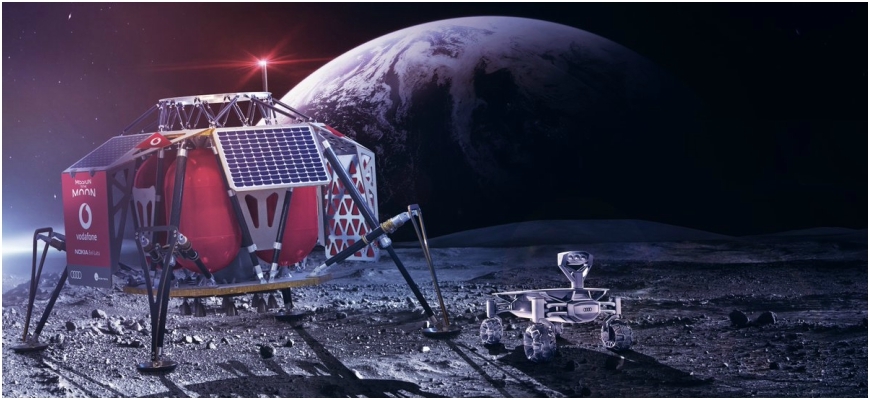Enjoy Live streaming of buffer-free lunar video by 2019: Thanks to Vodafone 4G
New Delhi, February 28: While we are still thriving hard for our 4G network here on Earth, scientists are looking to explore Moon with the help of same 4G network! In first of its kind, telecom giant Vodafone seeks to set up a 4G network by next year on Moon with an aim to support a mission by PTScientists in 2019.

German new-space firm PTScientists has been planning a mission to the Moon for many years. It has partnered with Audi to produce and deliver two XPrize-winning quattro rovers to the Moon that will explore both the lunar surface and carefully return to the Apollo 17 landing site in 2019.
Now the team has partnered with Vodafone and Nokia to create a Moon-based communications network using 4G LTE to bring high-definition video of the moon for us.
"The moon will get 4G coverage next year, 50 years after the first NASA astronauts walked on its surface. Vodafone plans to create the first 4G network on the moon to support a mission by PTScientists. We have target to land in 2019 on Moon," a Vodafone official said. The company has appointed Nokia as its technology partner for the 4G network.
"This will be the first privately-funded moon landing mission. It will lay the future of space exploration. The cost is less than what it costs for full mission lab. We will be below $50 million mark," Robert Bohme, CEO and Founder of PTScientists said.
Berlin-based PTScientists is working with Vodafone Germany and Audi on the project. Mission to the moon is due to launch in 2019 from Cape Canaveral on a SpaceX Falcon 9 rocket, Bohme added.
How?
Vodafone's base station will communicate with the rovers as they gather images and video of the various lunar sights. The 4G network will use the 1800 MHz frequency band to send HD video to the Autonomous Landing and Navigation Module (ALINA), which will then connect to PTScientists in Berlin. Nokia is making space-grade networking gear that will weigh less than one kilogram in total.
Vodafone testing indicates that the base station should be able to broadcast 4G using the 1800 MHz frequency band and send back the first-ever live HD video feed of the Moon's surface, which will be broadcast to a global audience via a deep space link that interconnects with the PTScientists server in the Mission Control Centre in Berlin. The project will last for about 11 days because of massive change in temperature on the moon, Bohme said.
A 4G network is highly energy efficient compared to analogue radio and that will be crucial to ‘Mission to the Moon’ and is the first step to building communications infrastructure for future missions, Bohme said.
Vodafone's network expertise will be used to set up the Moon's first 4G network connecting two Audi lunar quattro rovers to a base station in the Autonomous Landing and Navigation Module (ALINA).
Nokia, through Nokia Bell Labs, will create a space-grade Ultra Compact Network that will weigh less than 1 kilogram -the same as a bag of sugar. The 4G network will enable the Audi lunar quattro rovers to communicate and transfer scientific data and HD video while they carefully approach and study NASA's Apollo 17 lunar roving vehicle that was used by the last astronauts to walk on the Moon to explore the Taurus-Littrow valley in December 1972.